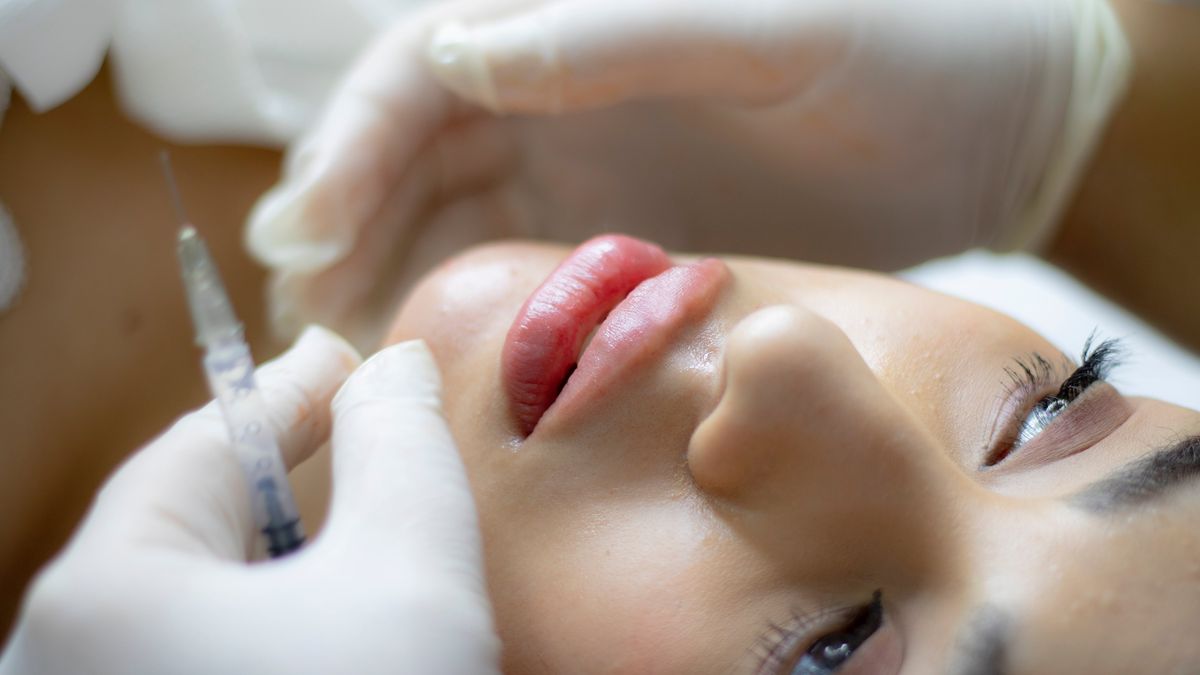Filler migration involves the movement of injected filler (e.g., hyaluronic acid filler) away from the location in which it was initially injected. This is a very rare occurrence in skilled, experienced hands. There are various reasons why filler migration may occur. All are based on conjecture. It is important to seek not only a fellowship-trained but also a double board-certified facial plastic surgeon who has extensive experience with injectable procedures to minimize the risk of filler migration.

What is Filler Migration?
Dr. Jeffrey Harmon
Filler Migration Can Occur Anywhere but is More Noticeable in Specific Locations
Filler migration can occur anywhere. However, it tends to be noticed more in specific locations such as the lips and the tear troughs.
Physical Signs of Filler Migration
The sign of filler migration is new volume in an area where it was not previously injected with filler. The changed contours can distort or eliminate the natural transition points from one anatomic region to another.
It is important to note, however, that swelling is normal after the injection of hyaluronic acid filler. Furthermore, this swelling can develop outside the area injected. Swelling tends to resolve after a few days but up to approximately two weeks. It rarely lasts longer than two weeks.
The Product Used, Total Volume Injected, and the Depth of Injection All Likely Affect the Risk of Migration
Too much product injected too superficially may be the primary reasons why filler migration occurs, though this is not proven in the medical literature. Furthermore, there is no “threshold” volume in one location over which filler migration is likely to occur. However, it stands to reason that the more mobile superficial tissue planes can push filler in locations it was not initially injected. This becomes more likely the more volume is added. Every patient is different and, therefore, can tolerate a specific volume before being overdone.
It is important, however, to avoid layering too much filler, especially different products, prior to the previously injected filler dissolving adequately. This can result in the gradual accumulation of too much filler that then migrates.
Trust Your Face to a Facial Plastic Surgeon
It is important to seek a fellowship-trained specialist in plastic surgery of the face when you have concerns about your face.
Why Choose Dr. Harmon
- The mission of Harmon Facial Plastic Surgery is to help people along their journey towards self-confidence, to feel good about feeling good.
- Dr. Harmon is a double board-certified facial plastic surgeon
- Dr. Harmon values making patients feel welcomed, listened to, and respected.
- Dr. Harmon graduated with honors from Cornell University with a Bachelor of Science degree in molecular biology.
- Dr. Harmon earned his medical degree from the University of Cincinnati.
- Dr. Harmon underwent five years of extensive training in head at neck surgery at the prestigious residency program at the University of Cincinnati.
- Dr. Harmon then underwent focused fellowship training in cosmetic facial plastic surgery through the American Academy of Facial Plastic and Reconstructive Surgery (AAFPRS) with the world-renowned surgeon, Dr. Andrew Jacono, on Park Avenue in New York City.
Request a Consultation
Request a consultation with Dr. Harmon at Harmon Facial Plastic Surgery in Cincinnati. Visit our clinic. You will learn more about Dr. Harmon’s credentials, style, and approach. Build a relationship with our dedicated team. Do not stop at searching “plastic surgery near me.” Get in touch with us to learn more!
This blog post is for educational purposes only and does not constitute direct medical advice. It is essential that you have a consultation with a qualified medical provider prior to considering any treatment. This will allow you the opportunity to discuss any potential benefits, risks, and alternatives to the treatment.
